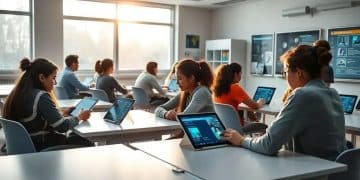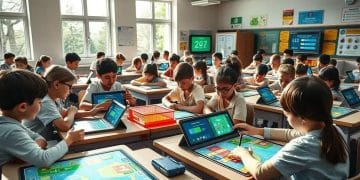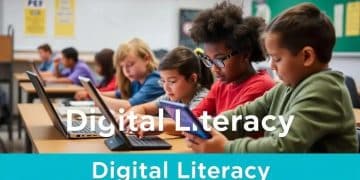School technology integration trends: what to watch
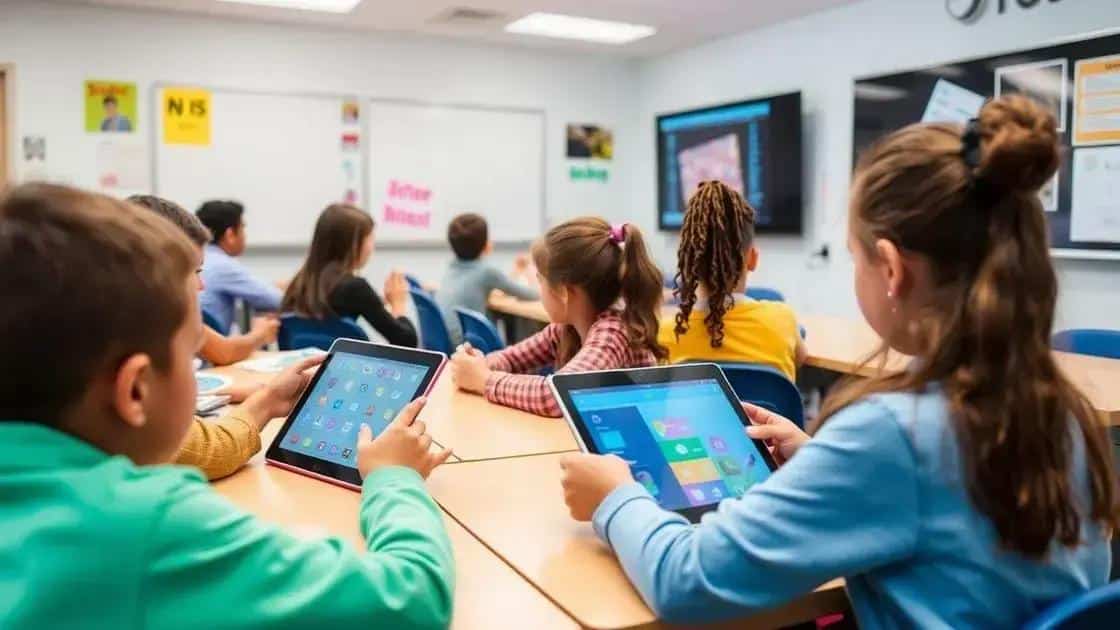
School technology integration trends focus on enhancing learning through personalized experiences, increased engagement, and the use of emerging technologies like AI and VR, despite challenges like funding and training.
School technology integration trends are quickly evolving, transforming how educators teach and students learn. Have you ever wondered how these advancements are shaping classrooms today? Let’s dive deeper into what’s happening in this exciting space.
Current trends in school technology integration
Today, current trends in school technology integration are shaping the way students learn and interact with information. As schools adopt modern tools, they provide innovative solutions that enhance the learning experience. Are you curious about what these trends involve?
Blended Learning Environments
One significant trend is the rise of blended learning environments. These settings combine traditional teaching methods with digital tools. Students now have the chance to engage through various platforms, allowing for personalized learning experiences that cater to individual needs. This method not only motivates students but also helps teachers track progress effectively.
Increased Use of Mobile Devices
Mobile devices are becoming crucial in the classroom. Tablets and smartphones allow for instant access to educational resources and tools. Schools are implementing Bring Your Own Device (BYOD) policies, encouraging students to use their gadgets for learning. This trend fosters responsibility and enhances collaboration among students.
Data-Driven Decision Making
With the integration of technology, data-driven decision making is more important than ever. Educators can now analyze student performance and engagement levels. By understanding data trends, teachers can modify their teaching strategies to improve student outcomes. Data helps identify areas needing attention, making learning more effective.
Innovation through Virtual Reality (VR)
Another exciting trend is the use of Virtual Reality (VR) in education. VR technology immerses students in interactive learning experiences. For instance, virtual field trips can transport students around the world, enhancing their understanding of different cultures and environments. Imagine learning about ancient history by exploring a virtual pyramids tour!
Gamification in Learning
Gamification is also transforming education. By incorporating game-like elements into lessons, teachers engage students better. Points, badges, and rewards motivate learners to participate actively. This trend supports skill development in a fun and interactive way.
In summary, current trends in school technology integration reflect an exciting evolution in education. With blended environments, mobile devices, data-driven insights, VR, and gamification at the forefront, schools are paving the way for a brighter future in learning.
Benefits of integrating technology in education
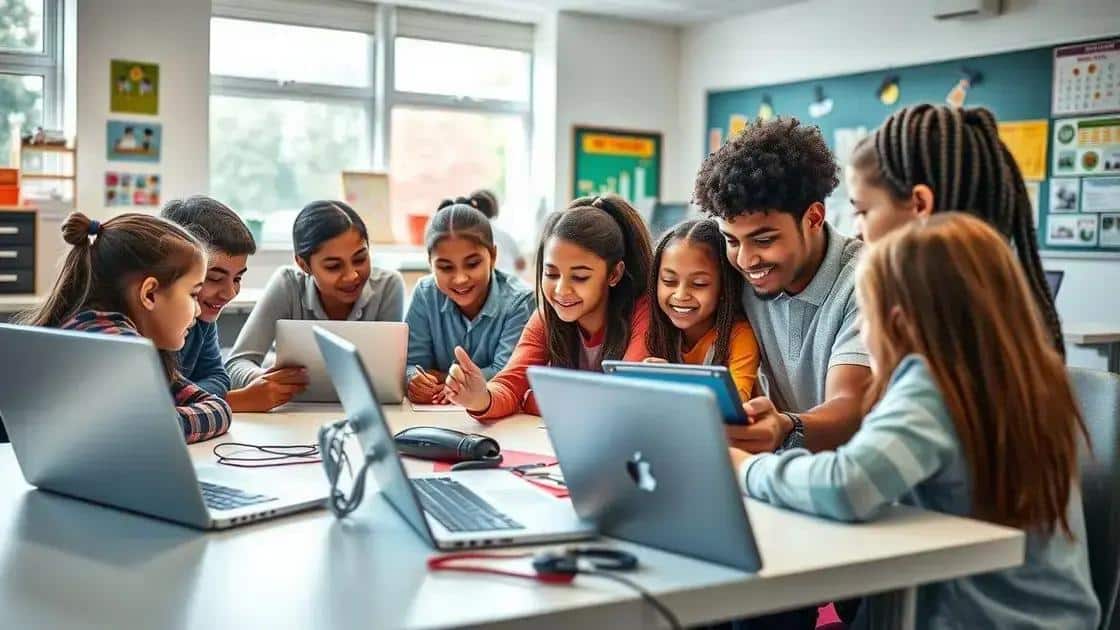
Integrating technology in education offers numerous benefits that enhance both teaching and learning experiences. With these advancements, classrooms become more interactive and engaging, helping students develop critical skills.
Enhanced Engagement
One of the primary benefits is enhanced student engagement. Digital tools captivate attention and encourage participation. Interactive lessons utilizing videos, quizzes, and games keep students focused. Engaged learners are more likely to retain information and excel academically.
Personalized Learning
Another significant advantage is the opportunity for personalized learning. Technology allows for tailored educational experiences based on each student’s needs. Tools like adaptive learning software analyze performance and adjust content accordingly. This customization promotes individual growth and supports various learning styles.
Access to Resources
Integrating technology in education also expands access to learning resources. Students now can explore a vast array of materials online, from eBooks to educational videos. This accessibility enriches their knowledge base and fosters independent research skills.
Collaboration and Communication
Furthermore, technology enhances collaboration and communication among students and teachers. Online platforms facilitate teamwork on projects, promoting the exchange of ideas. Students learn to work together and develop essential teamwork skills valuable in the modern workplace.
Overall, the benefits of integrating technology in education are vast and impactful. Enhanced engagement, personalized learning, access to resources, and improved collaboration contribute to a more effective educational environment.
Challenges faced by schools in technology adoption
Implementing technology in schools comes with several challenges that educators and administrators must navigate. Awareness of these obstacles is essential to ensure a smooth integration process and maximize the benefits of technology.
Cost of Technology
One major barrier is the cost of technology. Schools often face budget constraints, making it difficult to acquire the latest devices and software. Without adequate funding, it’s hard to provide a consistent technological environment that benefits all students.
Training and Support
Another significant challenge is the need for proper training and support for teachers. Many educators may lack the necessary skills to effectively use technology in their teaching. Continuous professional development is essential to help them feel confident and capable.
Resistance to Change
Furthermore, there can be a natural resistance to change among staff and students. Some may prefer traditional teaching methods and feel unsure about adapting to new technologies. Addressing these concerns is crucial for successful adoption.
Technical Issues
Technical problems can also arise during implementation. Connectivity issues or software glitches can interrupt lessons and frustrate both teachers and students. Having a reliable IT support system in place can help minimize these disruptions.
Lastly, ensuring equal access to technology is vital. Some students may not have access to devices or the internet at home, leading to a digital divide. Schools must find ways to bridge this gap to provide all students with equal learning opportunities.
Recognizing these challenges faced by schools in technology adoption can help educators plan and implement more effective strategies. By addressing these hurdles proactively, schools can create a more integrated and equitable learning environment.
Future outlook on technology in schools
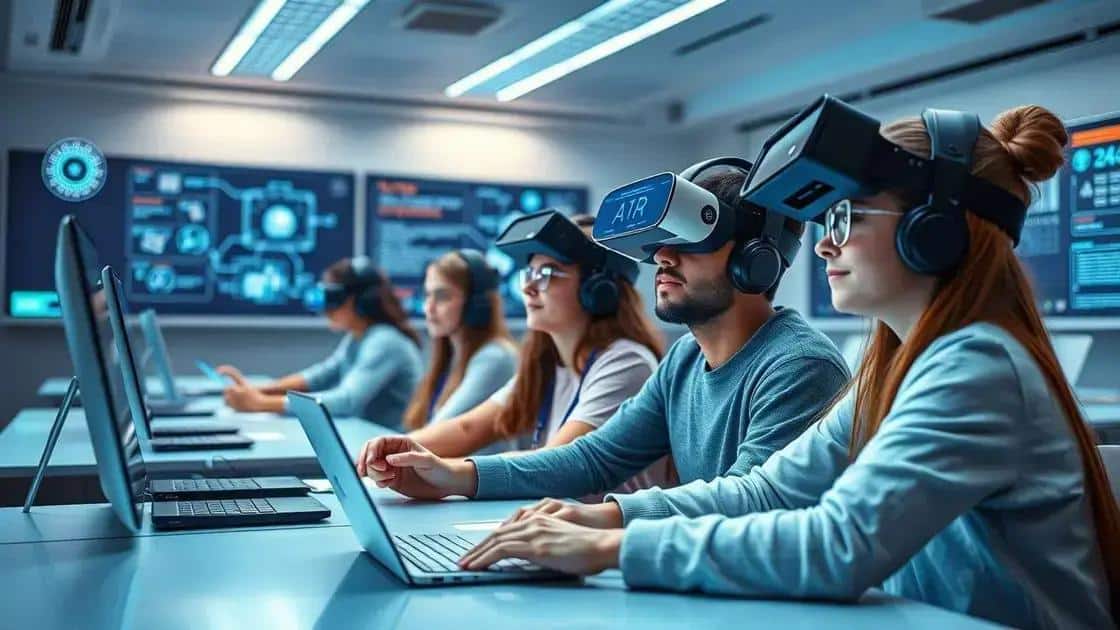
The future outlook on technology in schools is bright and full of possibilities. As education continues to evolve, new technologies are emerging that promise to enhance teaching and learning.
Increased Adoption of Artificial Intelligence
One significant trend is the increased adoption of artificial intelligence (AI). AI can provide personalized learning experiences for students. By analyzing data, AI systems can identify learning gaps and suggest tailored resources. This way, every student receives the support they need.
Expanding Use of Augmented and Virtual Reality
Augmented Reality (AR) and Virtual Reality (VR) are also becoming integral parts of the learning experience. These technologies create immersive environments where students can explore complex concepts in a hands-on manner. Imagine studying ancient history by virtually visiting historical sites, enhancing understanding in a fascinating way.
More Collaborative Learning Spaces
The design of classroom spaces will also transform. Schools will be creating more collaborative learning environments that promote teamwork. Flexible seating arrangements and technology-enabled spaces will foster interaction among students, making learning a group endeavor.
Focus on Digital Citizenship
As technology continues to permeate education, there will be an increased focus on digital citizenship. Schools will teach students how to use technology responsibly, understand online safety, and navigate the digital world effectively. These lessons are crucial in preparing students for a technology-driven society.
The future of technology in schools holds wonderful advancements that can enhance not only academic success but also social skills. By embracing these changes, schools can create a dynamic learning environment where students thrive.
In conclusion, the integration of technology in education is not just a trend; it’s a driving force for better learning experiences. From enhanced engagement through interactive tools to personalized learning paths shaped by AI, the future is bright. While challenges exist, like funding and training, the potential benefits far outweigh the obstacles. As schools prioritize digital citizenship and create advanced learning environments, students are better prepared for a technology-driven world. Embracing these changes will ensure that education remains relevant and effective in the years to come.
FAQ – Frequently Asked Questions about Technology in Schools
What are the benefits of integrating technology in the classroom?
Integrating technology can enhance student engagement, personalize learning, and improve access to resources.
What challenges do schools face in adopting technology?
Schools often encounter budget constraints, the need for teacher training, and resistance to change when adopting new technologies.
How can AI improve the learning experience?
AI can customize learning experiences by analyzing student data and providing tailored resources to meet individual needs.
Why is digital citizenship important in education?
Digital citizenship teaches students how to use technology responsibly, ensuring they are prepared for a technology-driven world.

